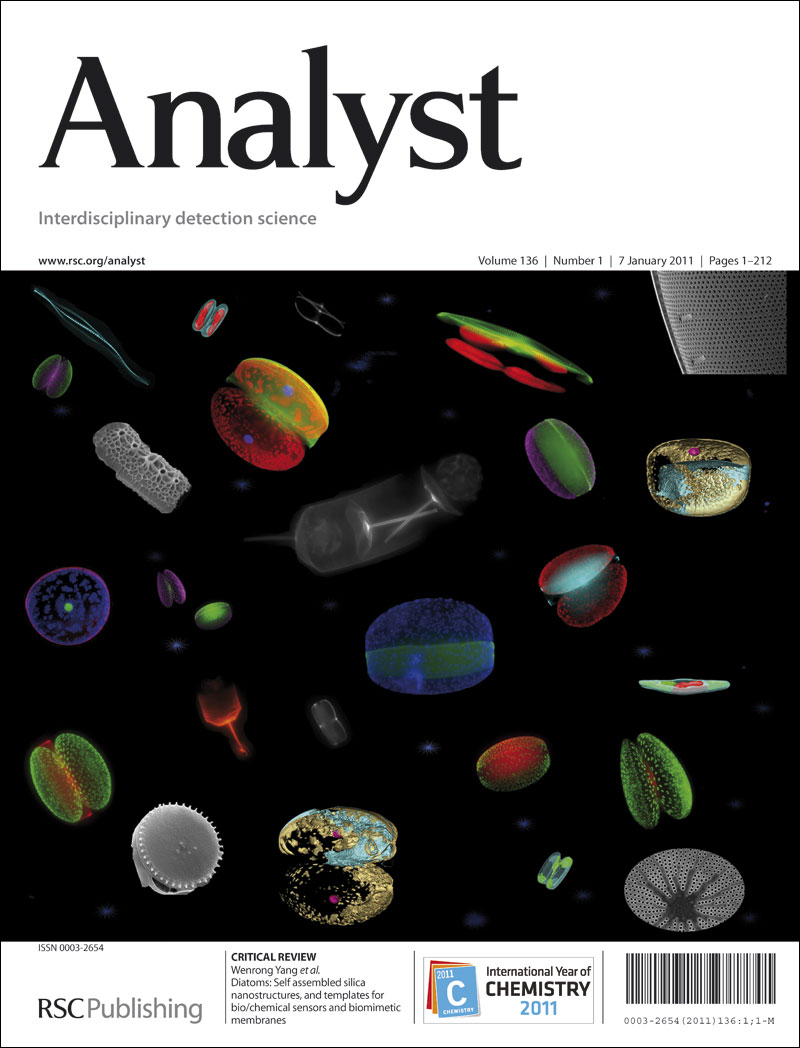基于钙掺杂钴酸镧的电化学传感器用于真实样品中水杨酸的灵敏检测:池塘水和痤疮凝胶
IF 3.3
3区 化学
Q2 CHEMISTRY, ANALYTICAL
引用次数: 0
摘要
水杨酸(SA)是一种新兴关注的污染物(CECs),属于药品范畴。它通常被用作治疗各种皮肤疾病的药物,也被用作世界各地滥用的非处方(OTC)药物。它也被用作植物产量提高的补充。暴露于高剂量的SA会导致水杨酸中毒。为了更好地监测SA的水平,本研究制备了Ca掺杂lacoo3 (LCCO)/GCE。采用溶剂热法合成了CLCO,并用SEM、FE-TEM、XRD、EDX和XPS等技术对其进行了表征。ca2 +被la3 +取代后,由于Co的氧化态发生了变化,形成了氧空位。la3 +和ca2 +离子半径相似,使得钙钛矿具有更好的结构稳定性和催化活性。LCCO/GCE具有良好的催化活性,检测限为30 nM,线性范围为0.05 ~ 800µM。制造的传感器还具有可重复性,相对标准偏差(RSD)小于1%,稳定长达30天,与初始电流值的变化小于5%。即使在其他干扰物浓度为百倍的情况下,该传感器也可选择性地感应SA。此外,还研究了该传感器在池塘水和痤疮凝胶中的实际适用性,两者都具有良好的回收率。本文章由计算机程序翻译,如有差异,请以英文原文为准。
Calcium-Doped Lanthanum Cobaltite-based Electrochemical Sensor for Sensitive Detection of Salicylic Acid in Real Samples: Pond Water and Acne Gels
Salicylic acid (SA) is a kind of Contaminants of Emerging Concern (CECs) belonging to the category of pharmaceutical products. It is commonly used as drug in treatment of various skin diseases and as an over-the-counter (OTC) drug used in an undisciplined manner across the world. It is also used as a supplement for yield improvement in plants. Exposure to high doses of SA can lead to a toxic condition as known as Salicylism. To better monitor the levels of SA, Ca doped LaCoO 3 (LCCO)/GCE is fabricated in this study. CLCO is synthesized by solvothermal method and characterised by SEM, FE-TEM, XRD, EDX, and XPS techniques.Substitution of Ca 2+ with La 3+ results in formation of oxygen vacancies due to variation in oxidation states of Co. The similar ionic radius of La 3+ and Ca 2+ deliver better structural stability as well as better catalytic activity for the perovskite. LCCO/GCE with its excellent catalytic activity could detect SA with the limit of detection (LOD) of 30 nM and a linear range of 0.05-800 µM. The fabricated sensor is also reproducible with relative standard deviation (RSD) less than 1% and stable up to 30 days with less than 5% variation from the initial current value. The sensor is also selective for sensing SA even in presence of hundred-fold concentrations of other interferents. In addition, the real-world applicability of the sensor is investigated in pond water and acne gel which both give excellent recovery percentages.
求助全文
通过发布文献求助,成功后即可免费获取论文全文。
去求助
来源期刊

Analyst
化学-分析化学
CiteScore
7.80
自引率
4.80%
发文量
636
审稿时长
1.9 months
期刊介绍:
"Analyst" journal is the home of premier fundamental discoveries, inventions and applications in the analytical and bioanalytical sciences.
 求助内容:
求助内容: 应助结果提醒方式:
应助结果提醒方式:


